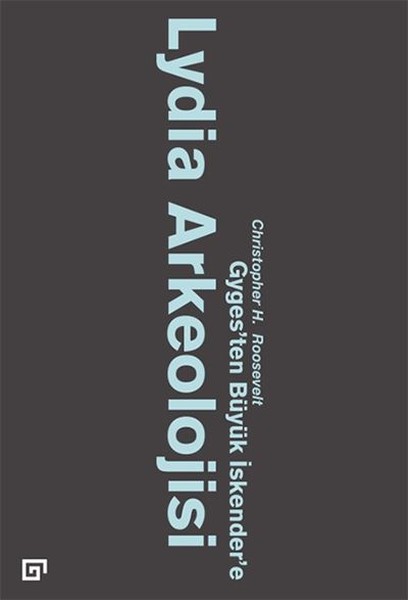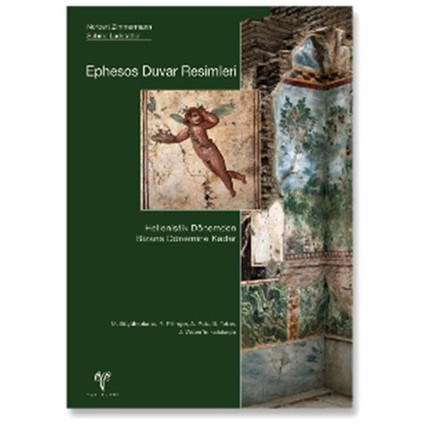Iron Age to Hellenistic Period
The Iron Age and the Classical Periods (1200–30 BC)
Following the tumultuous period at the end of the Late Bronze Age, the survivors of the Hittite aristocracy founded the Neo-Hittite kingdoms in southeastern Anatolia, at Carchemish, Zincirli, Malatya, and Karatepe. Farther east, excavations at Tushpa/Van, Cavustepe, and Altintepe/Erzincan provide testimony of the sophisticated bronze technology and the civil and military architecture of that time in the kingdom of Urartu, established by the descendants of the Hurrians.
In central Anatolia, the excavations at Gordion, the capital of the kingdom of Phrygia during the ninth and eighth centuries BC; at Midas City; and the tumulus at Elmali have recovered intricately painted dark-on-light pottery, ivory and wood carvings, and exquisite bronze implements. After the destruction of Phrygia by the Cimmerians around 700 BC, Lydia and its capital, Sardis, where coinage was invented, rose to political and economic power.
In the west, the Greeks reoccupied the former Mycenaean settlements at Troy, Ephesus, Miletos, and other sites. On the ruins of the Bronze Age civilizations, a new and vigorous Greek culture was born, documented in the excavations of the Protogeometric, Geometric, and Archaic ages at Smyrna/Bayrakli and Erythrai.
While the Persian conquest in 546 BC and the violent suppression of the revolt of Miletos in 496 BC forestalled the participation of western Anatolia in the achievements of classical Greece, the conquest by Alexander the Great revitalized the Greek civilization in Anatolia during the Hellenistic period (330–30 BC). The art of Pergamon was of paramount importance for the development of Roman art. Ephesus, Priene, Miletos, Halicarnassus, Aphrodisias, and dozens of other sites typify the achievements of the Hellenistic civilization of Anatolia during the Roman and Byzantine periods.
Zohar, Mattanyah. "Anatolia." In The Oxford Companion To Archaeology. : Oxford University Press, 2012.
-
The New Chronology of Iron Age Gordion by
Call Number: DS156.G6 N49 2011ISBN: 9781934536445Publication Date: 2011-12-30 -
Doğu Anadolu Bölgesi'nde erken demir çağı kale ve nekropolleri = early iron age fortresses and necropoleis in East Anatolia by
Call Number: DS51.E27 B45 2003ISBN: 9756561386 -
Anatolian Iron Ages 5 by
Call Number: GN780.32.T9 A53 2001ISBN: 1898249156Publication Date: 2005-07-28 -
 Identifying changes : the transition from Bronze to Iron Ages in Anatolia and its neighbouring regions : proceedings of the International Workshop, İstanbul, November 8-9, 2002
by
Call Number: GN855.T83 I34 2002ISBN: 9758070630
Identifying changes : the transition from Bronze to Iron Ages in Anatolia and its neighbouring regions : proceedings of the International Workshop, İstanbul, November 8-9, 2002
by
Call Number: GN855.T83 I34 2002ISBN: 9758070630 -
Greece, Anatolia and Europe: cultural interrelations during the early iron age by
Call Number: GN780.32 .B6 1997ISBN: 9170811687Publication Date: 1997-12-01 -
Lords of Asia Minor : an introduction to the Lydians by
Call Number: DS156.L9 P39 2016ISBN: 9783447105682Publication Date: 2016-05-25 -
Urartu : Doğu'da değişim = Urartu : transformation in the East by
Call Number: RCAC/DS156.U7 U725 2011ISBN: 9789750818578 -
-
-
-
 Ben gezginlerin sonuncusuyum : Midas kenti kazıları ve dağlık Frigya Bölgesi'ndeki araştırmalar
by
Call Number: RCAC/DS156.P5 H3820 2009ISBN: 9786053960560
Ben gezginlerin sonuncusuyum : Midas kenti kazıları ve dağlık Frigya Bölgesi'ndeki araştırmalar
by
Call Number: RCAC/DS156.P5 H3820 2009ISBN: 9786053960560 -
 Gyges'ten Büyük İskender'e Lydia arkeolojisi
by
Call Number: DS156.L9 R6619 2017ISBN: 9786059389334
Gyges'ten Büyük İskender'e Lydia arkeolojisi
by
Call Number: DS156.L9 R6619 2017ISBN: 9786059389334 -
 Lidyalılar ve dünyaları = The Lydians and their world
by
Call Number: RCAC/DS156.L9 L53 2010ISBN: 9789750817465
Lidyalılar ve dünyaları = The Lydians and their world
by
Call Number: RCAC/DS156.L9 L53 2010ISBN: 9789750817465 -
 TAY : Türkiye Arkeolojik yerleşmeleri 6- Demir Çağı
by
Call Number: DR431 .T873 2008ISBN: 9789758071821
TAY : Türkiye Arkeolojik yerleşmeleri 6- Demir Çağı
by
Call Number: DR431 .T873 2008ISBN: 9789758071821 -
 Tunç Çağı'nı Sona Erdiren Halklar Deniz Kavimleri
by
Call Number: DE73.2.S4 G7 2012ISBN: 9786053961826
Tunç Çağı'nı Sona Erdiren Halklar Deniz Kavimleri
by
Call Number: DE73.2.S4 G7 2012ISBN: 9786053961826 -
Anatolian Iron Ages by
Call Number: GN780.32.T9 A53 1990ISBN: 1898249059Publication Date: 1994-12-01 -
Trojans and Their Neighbours by
Call Number: DF221.T8 B75 2006ISBN: 0415349559Publication Date: 2005-12-12 -
Troy and Its Remains by
Call Number: DF221.T8 S2513 1994ISBN: 0486280799Publication Date: 1994-08-01 -
Troia VI Früh und Mitte : Keramik, Stratigraphie, Chronologie
Call Number: DF221.T8 P38 2014ISBN: 9783774939448 -
Troia and the Troad by
Call Number: DF221.T8 T744 2003ISBN: 3540437118Publication Date: 2002-11-27 -
-
-
Foundation Myths and Politics in Ancient Ionia by
Call Number: DS156.I6 M33 2013ISBN: 9781107037496Publication Date: 2013-11-21 -
-
 New Documents from Lydia
by
Call Number: CN415 .L84 2007ISBN: 9783700135319Publication Date: 2007-04-12
New Documents from Lydia
by
Call Number: CN415 .L84 2007ISBN: 9783700135319Publication Date: 2007-04-12 -
Karia and the Hekatomnids by
Call Number: DS156.C33 C37 2009ISBN: 9781407304236Publication Date: 2009-06-15 -
 Ege'de bir Anadolu uygarlığı : Karia (Karuwa / Karka / Karkişa / Krk)
Call Number: DS156.C33 K95 2007ISBN: 9789759132286
Ege'de bir Anadolu uygarlığı : Karia (Karuwa / Karka / Karkişa / Krk)
Call Number: DS156.C33 K95 2007ISBN: 9789759132286 -
 Aphrodisias : results of the excavations at Aphrodisias in Caria conducted by New York University
Call Number: DS156.A558 A64 2006ISBN: 9783805336994
Aphrodisias : results of the excavations at Aphrodisias in Caria conducted by New York University
Call Number: DS156.A558 A64 2006ISBN: 9783805336994 -
 Persler : Anadolu'da kudret ve görkem = The Persians : power and glory in Anatolia
Call Number: DR481 .P47 2017ISBN: 9789750840005
Persler : Anadolu'da kudret ve görkem = The Persians : power and glory in Anatolia
Call Number: DR481 .P47 2017ISBN: 9789750840005 -
Cities and Citadels in Turkey by
Call Number: DR431 .C58 2013ISBN: 9789042927124Publication Date: 2013-02-25 -
-
Hellenistic Architectural Sculpture by
Call Number: NA3565.A3 A288 1996ISBN: 0299149803Publication Date: 1996-10-15 -
-
 Hellenistic Architecture in Asia Minor
by
Call Number: NA279.A8 S7 1992ISBN: 031208112XPublication Date: 1992-12-01
Hellenistic Architecture in Asia Minor
by
Call Number: NA279.A8 S7 1992ISBN: 031208112XPublication Date: 1992-12-01 -
-
-
-
The Cambridge Companion to the Hellenistic World by
Call Number: DE86 .C35 2006ISBN: 0521535700Publication Date: 2006-05-01 -
City Government in Hellenistic and Roman Asia Minor by
ISBN: 1423720857Publication Date: 2005-01-01 -
-
-
Magnesia on the Meander - an Archaeological Guide by
Call Number: DS156.M33 B5613 2007ISBN: 9789944483032Publication Date: 2007-12-31 -
Hierapolis of Phrygia (Pammukkale) by
Call Number: DS156.H53 D363713 2010ISBN: 9786055607074Publication Date: 2010-12-31 -
 Ephesos duvar resimleri : Hellenistik dönemden Bizans dönemine kadar
Call Number: ND2570 .Z56 2011ISBN: 9786055607500
Ephesos duvar resimleri : Hellenistik dönemden Bizans dönemine kadar
Call Number: ND2570 .Z56 2011ISBN: 9786055607500 -
Cult in Pisidia. Religious Practice in Southwestern Asia Minor from Alexander the Great to the Rise of Christianity by
Call Number: BL2320 .T35 2015ISBN: 9782503991146Publication Date: 2015-03-18









